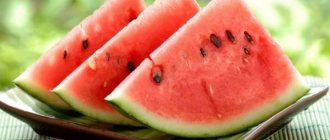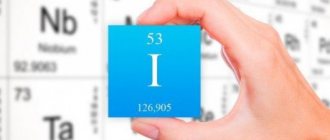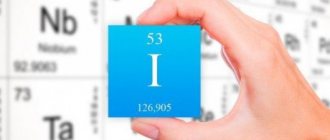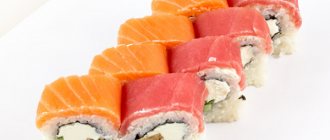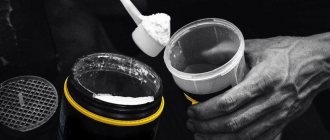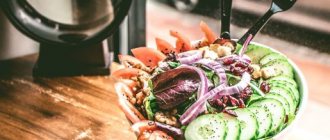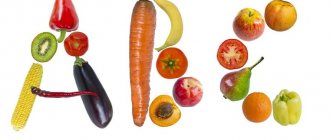General information
It is interesting that the mineral actively migrates in the biosphere; the accumulation of the compound in living organisms occurs due to inhalation of volcanic fumes, contact with calcareous rocks, thermal waters, and regular consumption of products grown in soil enriched with the microelement.
Selenium is actively dissolved in concentrated nitric acid and alkalis. In air, it is resistant to oxygen, water, sulfuric and hydrochloric acids.
In the human body, the mineral accumulates in the liver, kidneys, spleen, heart, bone marrow, lungs, skin and spermatic cords. The total concentration of the microelement in the internal organs does not exceed fourteen milligrams (match head). In microdoses it is found in the nuclei of all cells.
For better absorption of selenium, it is recommended to simultaneously take vitamins E,. At the same time, sulfates, mercury, phenacetin, copper, paracetamol, antimalarial drugs, on the contrary, reduce the absorption of the compound, which can ultimately lead to the development of mineral deficiency in the body.
Selenomethionine, selencysteine (the natural form of the compound) has the highest degree of digestibility - up to 98%. The body absorbs only 30% of the element from the animal form, and 10% from the inorganic form (sodium selenite).
Selenium
Selenium is a trace element that occurs in the human body in the form of selenoprotein. A healthy person’s body contains about 13 mg of this substance; in order to maintain this amount throughout life, it is necessary to additionally nourish the body with a small amount of it every day.
The trace element is part of certain proteins and is found in the cells of the human body. The largest amounts are located in the liver, heart, kidneys, spleen and male genitals.
The best absorbed form of selenium is called selenomethionine (up to 98% absorption). Therefore, this is what you need to look for in supplements.
Selenium functions
This microelement plays an important role in maintaining health. Thus, after the introduction of selenium into the diet of people, the number of cancer diseases decreased by 1.8 times, the number of heart pathologies - by 2.5, and diseases of the endocrine system decreased by 77%.
The role of the mineral in the human body.
- Part of 200 enzymes and hormones. In addition, an element in the form of the amino acid selenocysteine is present in proteins as a link.
- Increases stem cell activity, maintains skin elasticity, slowing down aging.
- Required for the formation of 80% of energy (ATP).
- Stimulates the body's antioxidant defense.
- Normalizes the activity of the hormones thyroxine (T4) and triiodothyronine (T3).
- Prevents the development of malignant neoplasms, cataracts, colitis, thrush, arthritis, psoriasis, bronchial asthma.
- Increases physical activity, improves sleep, mood, condition of nails, hair, skin, reduces the intensity of headaches.
- Participates in the synthesis of coenzyme Q-10.
- It is the main component of the glutathione enzyme, which protects internal organs from toxic substances formed during the breakdown of toxins.
- Improves fat, protein, carbohydrate metabolism.
- Suppresses histamine, exhibiting strong antidystrophic and antiallergic properties.
- Promotes tissue proliferation, strengthens the immune system, improves the functioning of the heart and gonads (activates the production of testosterone, reduces the risk of prostate cancer, increases the viability of sperm, the likelihood of conception in men and “delays” the onset of menopause in women).
- Protects the body from poisoning by exhaust gases, tobacco smoke, cadmium, lead, thallium, and neutralizes the harmful effects of mercury and arsenic.
- Stabilizes the activity of the endocrine and nervous systems.
Interestingly, selenium compounds restore low blood pressure during collapse or shock. Shampoos containing this mineral relieve dandruff from hair.
Selenium plays an important role in the body of a pregnant woman: it promotes the normal development of the fetus, reduces the likelihood of miscarriage and the appearance of pathologies, and also normalizes the unstable emotional state of the expectant mother.
With age, the amount of microelement in the body decreases: after 60 years by 7%, 75 by 24%.
Selenium in food
"MOON" MICROSUPPLEMENT
Selenium was named so from the Greek word Selene (Moon) for the similarity of the brilliance of this metalloid with moonlight. Selenium enters the human body with food in amounts of only 55–110 mg per year and is concentrated mainly in the liver and kidneys. Selenium is a component of many functional proteins that are important for health. These are, first of all, enzymes involved in protecting the body from reactive oxygen species, which are quite insidious - capable of destroying cell membranes, oxidizing fats, proteins, DNA, RNA, leading to the development of atherosclerosis, early aging and even cancer. Selenium has unique antioxidant properties, neutralizing these radicals and therefore manifests itself as a strong immunomodulatory and anticancer agent that has a beneficial effect on the entire body. Thus, it improves the body's immune defenses to successfully protect it from viruses and other pathogens.
Selenium, like vitamin E, prevents some liver diseases, and is also able to protect the body from mercury and cadmium poisoning, since it binds them, like other heavy metals. It is also involved in the metabolism of iodine, which is vital for the body. The whole range of its beneficial properties makes selenium an indispensable microelement for our body.
Selenium deficiency contributes to the development of only about 40 diseases, in addition to those listed, in particular, it accelerates the development of rheumatoid arthritis, cataracts, coronary heart disease and other cardiovascular diseases, and significantly increases the risk of myocardial infarction. Due to a lack of selenium, the risk of male infertility increases, since selenium has a pronounced protective effect on sperm and ensures their motility.
FOODS RICH IN SELENIUM
Residents of Belarus consume on average 50-80 mcg of selenium per day, with a norm of 100 mcg, which is determined by the characteristics of soils containing low concentrations of this microelement. No mineral food supplements solve the problem of selenium deficiency, since they are not able to provide the exact dosage of the microelement that we need so much. It is very dangerous to independently enrich food and drinking water with selenium - in case of overdose, undesirable consequences are possible, because selenium in large doses is a formidable poison. And evenly distributing the required dose of selenium in food is not at all easy. The only safe way is to add selenium to the food of farm birds and animals (especially since small quantities of selenium must be contained in the food of chickens, calves, lambs and rabbits to ensure sustainable growth of their bodies), and also use it for strictly dosed feeding of plants.
Most living organisms have the unique ability to process inorganic selenium, which is toxic to humans, into a biologically well-absorbed non-toxic form - protein selenomethionine. Products of animal and plant origin serve as a kind of dispenser, eliminating the possibility of selenium overdose in people. Only through such a food chain can we ensure that this microelement enters our body in the form of safe and easily digestible natural compounds.
The main sources of selenium in food are processed grain products, meat, fish and exotic seafood and tropical nuts. Domestic vegetables and fruits contain selenium only in tiny “trace” quantities. There is no selenium in lard, and not much of it in meat, but high concentrations of the microelement are found in the liver, kidneys, as well as in the milk and caviar of freshwater fish.
Among the domestic natural selenium accumulators, garlic can be mentioned first of all (about 200 μg Se/kg). But it is valuable primarily as a product containing a unique selenium derivative, which has a pronounced anti-carcinogenic effect. Brussels sprouts and broccoli, as well as perennial onions, although to a lesser extent, also contain noticeable amounts of selenium. One of the most delicious and affordable sources of selenium is milk corn. Yeast, especially brewer's yeast, is considered the best source of selenium, not only because it contains a lot of it, but also because it is in a biologically active form and is easily digestible. But yeast did not take root in our country as a food product, although during the war it was actively introduced into the diet of military personnel in the rear.
| Products containing selenium | mcg per 100 g of product |
| Brazil nuts | 1530 |
| Fried pork kidneys | 270 |
| Boiled lobsters | 130 |
| Canned tuna | 90 |
| Fried lamb kidneys | 88 |
| Squid | 66 |
| Steamed escalope | 51 |
| Sardines in oil | 49 |
| Sunflower seeds | 49 |
| Fried herring | 46 |
| Boiled shrimp | 46 |
| Fried flounder | 45 |
| Boiled mussels | 43 |
| Baked salmon | 43 |
| Mackerel in brine | 42 |
| Wholemeal bread | 35 |
| Baked cod | 34 |
| Fried salmon | 31 |
| Boiled shrimp | 23 |
| Oysters | 23 |
| Fried pork fillet | 21 |
| Egg yolk | 20 |
| Boiled crabs | 17 |
| Kurin. fried breasts. without skin | 16 |
| Cheddar cheese | 12 |
| Fried egg | 12 |
Throughout the civilized world, pork, beef, milk and eggs with a high selenium content are produced. In Belarus, they also began to produce chicken and quail eggs, the selenium content of which is twice as high as in ordinary eggs. In the future, we will produce “selenium” cow’s milk. It is possible to grow selenium-enriched garlic and cabbage, cabbage and broccoli, as well as perennial onions.
But selenium is a very insidious element. It is strictly prohibited to independently grow “selenium” vegetables on dacha acres by watering the beds with a solution of sodium selenate or selenite. The latter is the most toxic among selenium derivatives.
When doses of selenium in dietary supplements exceed 800 mcg/day, toxicosis develops, which in extreme cases can lead to death. You should strictly adhere to the World Health Organization recommended daily selenium intake for adults - 50 mcg.
Yuri GUZIK, head. food hygiene department
Daily requirement
Let's consider in what doses selenium should be taken:
- infants 1 – 3 years old – 20 micrograms;
- children 4 – 8 years old – 30 micrograms;
- schoolchildren 9 – 13 years old – 40 micrograms;
- adolescents 14 – 18 years old – 55 micrograms;
- women 19 years of age and older – 55 micrograms;
- men 19 years of age and older – 70 micrograms;
- pregnant and breastfeeding women – 65 – 75 micrograms.
Indications for additional selenium intake: diseases of the pancreas, liver, biliary tract, cardiovascular system, infertility, hyperlipidemia.
The doctor selects the therapeutic dose based on the clinical picture of the disease.
Deficiency and excess
Selenium deficiency occurs with low consumption of foods containing valuable microelements (below 5 mcg/day). The main reason for the lack of substance is an unbalanced diet, where fast carbohydrates predominate. The wrong menu includes sweets and chocolate, carbonated drinks and juice packs, baked goods and sugar. The danger of a high-carbohydrate diet is that it prevents the body from absorbing selenium.
According to the concept of proper nutrition, the diet should not contain the harmful foods listed above. They not only neutralize selenium, but also disrupt the functioning of all vital systems.
A deficiency of a valuable microelement can be recognized by the following signs:
- physical weakness, fatigue;
- sleep disturbance;
- Bad mood;
- thinning of the skin, slower regenerative function, skin susceptibility to rashes and irritation;
- frequent colds due to decreased immunity;
- problems in the sexual sphere (both men and women), difficulties with conception;
- eating disorders;
- allergic reactions;
- blurred vision, increased eye fatigue.
Do not ignore the alarming symptoms of mineral deficiency. If they occur, you should consult a doctor for a series of studies. Selenium deficiency can provoke the development of the following pathologies:
- changes in blood composition, anemia;
- weakening of thyroid function;
- heart diseases;
- oncology;
- metabolic disorders, resulting in excess weight.
Neglected cases result in an autoimmune disease of the thyroid gland - Hashimoto's disease. With this pathology, the body produces cells that attack the thyroid gland.
An excess of selenium in the body is considered no less dangerous. Although it is almost impossible to accumulate a large amount of a chemical element by consuming food due to the unrealistic volume.
However, there are many dietary supplements on the market that contain compounds enriched with selenium. If used incorrectly, overdose is possible. It is also possible to get an excess due to the daily consumption of exotic products over a long period.
You can recognize an overdose of a mineral by the following signs:
- deterioration in appearance (hair loss, dry skin, splitting of nail plates);
- sudden mood swings (from depression to aggression);
- problems with respiratory function;
- stool disorder.
A systemic excess of a microelement can result in liver or kidney damage.
Selenium-rich foods
Selenium deficiency
A deficiency of the compound in the body develops if a person regularly consumes less than 5 micrograms of the mineral per day. Newborns receive selenium through mother's milk.
Reasons for lack of connection:
- unfavorable environmental conditions;
- taking anabolic steroids;
- unbalanced diet;
- hard physical labor;
- the presence of arsenic compounds in food, water, air;
- intense sports activities;
- high nitrate content in greens and vegetables;
- consumption of meat from animals that are fed on growth hormones;
- taking anti-malaria drugs, laxatives, paracetamol;
- living in a region far from the sea or with a hot climate, as a result of which the element is actively excreted through sweat;
- abuse of semi-finished products, sweets, canned food.
Primary symptoms of selenium deficiency in the body (shortage up to 40%):
- decreased visual acuity;
- chronic fatigue, neuroses;
- low physical and mental endurance;
- premature aging, early menopause;
- frequent colds due to weakened immunity;
- skin pustular diseases;
- long-term tissue regeneration after damage to the skin (burns, cuts, injuries);
- lack of sexual desire, impotence, male infertility.
Consequences of chronic mineral deficiency (up to 100%):
- obesity or dystrophy;
- endemic goiter, thyroid dysfunction;
- oncological, gynecological diseases;
- hormonal disorders;
- atherosclerosis, hypertension, coronary heart disease;
- miscarriages, premature births;
- asthma, rheumatoid arthritis, endemic cretinism;
- Keshan, Kashin-Beck disease, the latter, in turn, leads to osteoarthropathy.
Overweight people most often suffer from a lack of selenium in the body. The reason for this relationship is that a deficiency of this mineral impairs the functioning of the thyroid gland, as a result, metabolism slows down and body weight is retained.
Selenium: which products contain large quantities - review, table, rating
The element enters the body with food and water. The amount of selenium in protein products depends on the animal's diet. Plants get it from the soil. The degree of accumulation is determined by the composition of the soil. Plant products grown under different conditions may differ in Se content. Please keep this in mind as you review the data below.
Selenium in nuts and seeds
The best known source of Se is Brazil nut. One hundred grams contains 1917 mcg, which is 6.4 times higher than the permissible daily allowance. A nucleolus per day (it is quite large) will more than provide us with a microelement. Don't get carried away. Uncontrolled consumption of the product may result in an overdose.
| Name | Content | % daily requirement |
| Peanut | 0,72 | 13,3 |
| Sunflower seeds | 53 | 96,4 |
| Almond | 0,25 | 4,5 |
| Flax seed | 25,4 | 46,2 |
| Cashew | 11,7 | 21,3 |
| Pumpkin seeds | 9,4 | 17,1 |
| Pistachios | 7 | 12,7 |
Considering availability, I would put sunflower seeds first. It’s not for nothing that the tradition of “husking seeds” has taken root in Rus'. The nucleoli contain B vitamins, mineral salts, and fat-soluble compounds. Seeds are a valuable and nutritious addition to traditional food.
Cereals and legumes
This category of products is considered to be the richest in Se. The cell is especially useful. During its processing, many important elements are preserved. Selenium is no exception. But semolina, couscous, bulgur and risoni are much inferior. I didn’t even bother entering data on them into the table.
| Groats | Quantity, mcg | % daily dose |
| Pearl barley | 37,7 | 68,5 |
| Jachka | 38 | 68,5 |
| Rice | 5 | 9,1 |
| Buckwheat | 5,7 | 10,4 |
| Spelled | 11,7 | 21,3 |
| Oatmeal | 28,9 | 52,5 |
| Chickpeas | 28,5 | 51,8 |
| Mung beans | 8,2 | 14,9 |
| Beans | 24,9 | 45,3 |
| Lentils | 19,6 | 35,6 |
| Quinoa | 8,5 | 15,5 |
As you can see, barley groats are in the lead. It is slightly inferior to pearl barley, chickpeas, oatmeal and beans. I decided to cook dishes from them more often. An average serving will easily cover most of your daily needs.
Dairy
They perfectly complement porridge and rye bread.
| Name | How much does it contain? | % of norm |
| Milk | 2 | 3,6 |
| Cottage cheese | 30 | 49,5 |
| Yogurt | 2 | 5,1 |
| Kostromskaya cheese | 14,5 | 26,4 |
| Dor Blue | 14,5 | 26,3 |
The highest concentration of selenium is in cheeses and cottage cheese. But milk and kefir are not suitable for the role of leaders. To cover the daily dose, you will need to drink 27 liters
